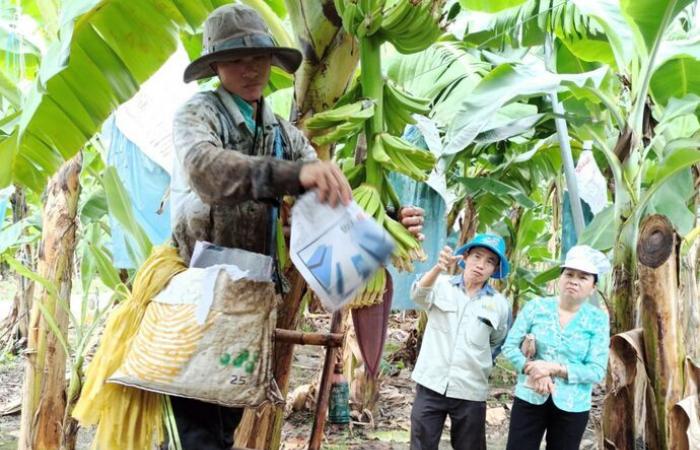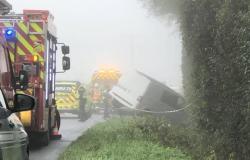>> Export of bamboo and banana leaves earns millions of USD
After more than 3 years of implementation, the high-tech banana production project at Minh Tan Farm (under Unifarm) has achieved initial success. After being processed and packaged, more than 80% of the products have been exported to Japan and the Republic of Korea.
| The high-tech banana production project, the result of cooperation between the Minh Tan farm and the Dau Tieng rubber company. |
| Photo: VNR/CVN |
Thanks to the cooperation with the Dau Tieng rubber company, this project is currently a leader in terms of productivity and quality. Each hectare at Minh Tan farm yields 70 tons of bananas/year, three times more than the national average.
According to a representative of Dau Tieng Rubber Company, the company is converting low-yield and inefficient rubber growing areas into high-tech agriculture areas, which is in line with the general trend of agricultural sector development. Thus, the company has made optimal use of land resources and contributed to increasing land use efficiency.
With the Minh Tan high-tech banana farming project, Dau Tieng Rubber Company has achieved a profit of nearly 30 billion VND in 2023, exceeding 140 percent of the initial plan. In the first six months of this year, the company continued to record positive growth compared to the same period last year, with its profit exceeding 18 billion VND, shared Nguyen Ngoc Nhat Son, deputy head of the planning and investment department of Dau Tieng Rubber Company.
New agricultural model
To continue its success, Dau Tieng Company plans to continue exporting Vietnamese bananas.
According to Nguyen Duc Hien, general manager of Dau Tieng Rubber Company, converting the agricultural model to take advantage of partners’ experience, technology, market and capital is the first step towards mastering technology and penetrating the market.
Currently, the company manages about 24,000 hectares of rubber trees, but by 2030, this area will be reduced to about 15,000 ha or less to reserve land for the development of industrial parks and hubs and especially for the development of high-tech agriculture.
Since 2016, the VRG has been encouraging and creating the conditions for several member companies to pilot high-tech agricultural models with various types of plants, including bananas, sachis (Plukenetia volubilis L), melons, green-skinned grapefruit and other citrus fruits.
The VRG plans to invest in large-scale, high value-added agricultural development until the end of 2030, over an area of more than 36,220 ha, including 5,000 ha for banana cultivation.
VNA/CVN






